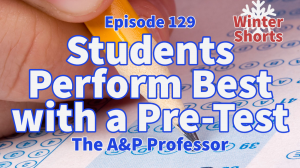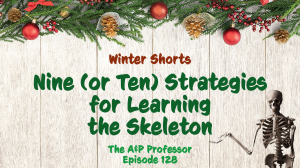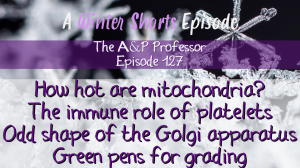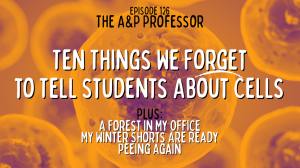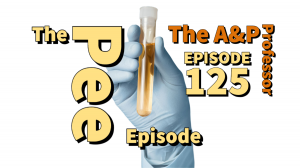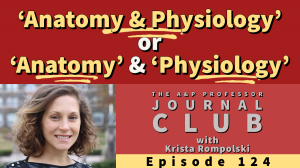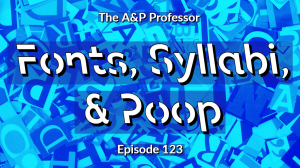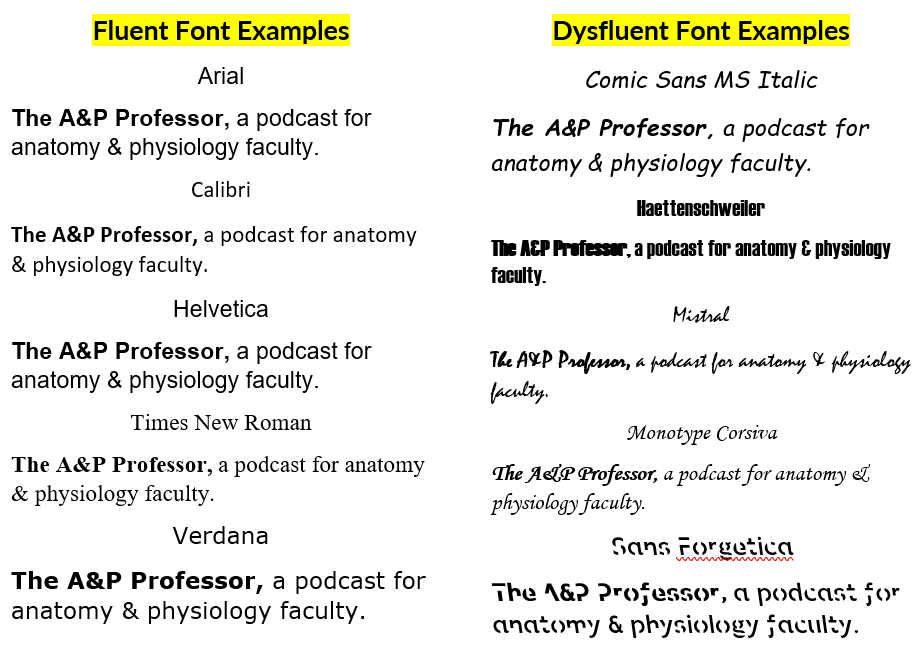In yet another of our Winter Shorts episodes, Kevin Patton discusses his experience with Pre-Tests as a learning tool—not simply an assessment tool. Surprisingly, the use of Pre-Tests improved student scores on the regular tests.
00:00 | Introduction
01:07 | What is a Pre-Test?
07:52 | Sponsored by AAA, HAPI, and HAPS
09:25 | More Strategies for Learning the Skeleton
15:13 | Staying Connected
★ If you cannot see or activate the audio player, go to: theAPprofessor.org/podcast-episode-129.html
🏅 Apply for your credential (badge/certificate) for listening to this episode: theAPprofessor.org/podcast-episode-129.html/#badge
⭐⭐⭐⭐ Please rate & review this podcast so that others can decide whether to give it a try: RateThisPodcast.com/theAPprofessor
❓ Please take the anonymous survey: theAPprofessor.org/survey
☝️ Questions & Feedback: 1-833-LION-DEN (1-833-546-6336)
✔️ Follow The A&P Professor on Twitter, Facebook, Blogger, Revue, Tumblr, or Instagram! @theAPprofessor
📰 Get the thrice-weekly TAPP Science & Education Updates theAPprofessor.org/updates
Guess what? This is another one of our winter shorts! Yep, that's right, it's a shorter-than-usual episode in which I present one or two, or maybe three or four, classic, evergreen segments from previous episodes that are remastered, reconstituted, and recycled for your listening and learning pleasure. But mainly it's to give me a break for self-care over the holiday season. We'll be back to our regular programming in late January.
What is a Pre-Test?
7 minutes
Pre-Testing isn't just for measuring prior competence before new learning starts. By itself, regardless of its use in course assessment, it's a powerful learning tool. Listen to Kevin's experience with pre-testing in his A&P courses.
★ The first of two classic segments from Pre-Testing for a Powerful Learning Boost | Episode 3
★ Other episodes & seminars related to the pre-testing concept or practice:
★ ★ Online Testing Effectiveness Data | Turning My Gray Hair Brown | TAPP 102
★ ★ Even MORE Test Answers | Normal Body Temperature? | TAPP 101
★ ★ More Quizzing About Kevin’s Wacky Testing Scheme | Book Club | TAPP 100
★ ★ Quizzed About Tests | FAQs About Patton Test Strategies | TAPP 99
★ ★ Taking Bold Steps in Teaching | Notetaking | Science Updates | TAPP 90
★ ★ Revisiting Retrieval Practice | Episode 68
★ ★ Test Frequency in the A&;P Course | Episode 33
★ ★ Long Term Learning | Five Strategies for Teaching A&P
Pre-Tests as Student Success Tools (more on Kevin's case study; has links to other resources)
Small Teaching: Everyday Lessons from the Science of Learning (a great book that includes some info on using pre-tests as a learning strategy)
Sponsored by AAA, HAPI, and HAPS
90 seconds
A searchable transcript for this episode, as well as the captioned audiogram of this episode, are sponsored by the American Association for Anatomy (AAA) at anatomy.org.
The Master of Science in Human Anatomy & Physiology Instruction—the MS-HAPI—is a graduate program for A&P teachers, especially for those who already have a graduate/professional degree. A combination of science courses (enough to qualify you to teach at the college level) and courses in contemporary instructional practice, this program helps you be your best in both on-campus and remote teaching. Kevin Patton is a faculty member in this program at Northeast College of Health Sciences. Check it out!
The Human Anatomy & Physiology Society (HAPS) is a sponsor of this podcast. You can help appreciate their support by clicking the link below and checking out the many resources and benefits found there. Watch for virtual town hall meetings and upcoming regional meetings!
★ Anatomy & Physiology Society
Are Pre-Tests Best?
6 minutes
The discussion continues, focusing on what happened in Kevin's anatomy and physiology course after he implemented his pre-test scheme.
★ Second of two classic segments, it was first heard in Nine Super Strategies for Teaching the Skeleton | Episode 10
★ Micro-Credentials & Gamification in the A&P Course | Brown & Black Skin | Refresher Tests | TAPP 87 (gamification, discussed in this segment, is elaborated further in Episode 87)
People
Production: Aileen Park (announcer), Andrés Rodriguez (theme composer, recording artist), Rev.com team (transcription), Kevin Patton (writer, editor, producer, host)
If the hyperlinks here are not active, go to TAPPradio.org to find the episode page.
★ More details at the episode page: theAPprofessor.org/podcast-episode-129.html
★ Transcript available in the transcript box: theAPprofessor.org/podcast-episode-129.html
★ Need help accessing resources locked behind a paywall? Check out this advice from Episode 32 to get what you need! my-ap.us/paywall
Take The A&P Professor experience to the next level!
★ theAPprofessor.org/community
Earn cash by referring other A&P faculty to this podcast:
Tools & Resources
★ TAPP Science & Education Updates: theAPprofessor.org/updates
★ Amazon: amzn.to/2r6Qa3J
★ Text Expander: theapprofessor.org/textexpander
★ Rev.com: try.rev.com/Cw2nZ
★ Snagit & Camtasia: techsmith.pxf.io/9MkPW
★ Krisp Free Noise-Cancelling App: theAPprofessor.org/krisp
★ JotForm (build forms for free): theAPprofessor.org/jotform
★ QuillBot (writing tools): theAPprofessor.org/quillbot
★ The A&P Professor Logo Items: https://www.teepublic.com/stores/the-a-p-professor
Sponsors
★ Transcript and captions for this episode are supported by the American Association for Anatomy | anatomy.org
★ The Human Anatomy & Physiology Society provides marketing support for this podcast | theAPprofessor.org/haps
★ Distribution of this episode is supported by the Northeast College of Health Sciences online graduate program in Human Anatomy & Physiology Instruction (HAPI) | northeast.edu/hapi
Clicking on sponsor links helps let them know you appreciate their support of this podcast!
Follow The A&P Professor on Twitter, Facebook, Blogger, Revue, Tumblr, or Instagram @theAPprofessor
The A&P Professor® and Lion Den® are registered trademarks of Lion Den Inc. (Kevin Patton)
As an Amazon Associate I earn from qualifying purchases. I may be compensated for links to sponsors and certain other links.
Click here to listen to this episode—or access the detailed notes and transcript.

